
Roots
Consider for a moment the quiet whisper of a comb gliding through strands, not as a solitary act, but as a shared rhythm across countless generations. Long before mirrors or mass-produced elixirs, hair care was rarely a private endeavor. It was a language spoken through touch, a silent pact sealed with every braid and coil.
This fundamental connection, stretching back to humanity’s earliest days, reveals how deeply our hair was, and remains, entwined with the very fabric of our collective lives. It was in these simple, repeated motions that communities found their shared pulse, a quiet yet powerful affirmation of belonging.
The earliest human settlements, driven by a need for cooperation and collective survival, found expressions of unity in surprising places. Hair, being so visible and so personal, became a canvas for these expressions. From protective styles that shielded against harsh elements to symbolic adornments that communicated lineage or status, hair practices served as more than mere aesthetics.
They were practical necessities, certainly, but also profound statements of shared existence. The care of hair, whether for a child, a spouse, or an elder, inherently demanded proximity and time, creating opportunities for verbal exchange, teaching, and the strengthening of interpersonal ties.
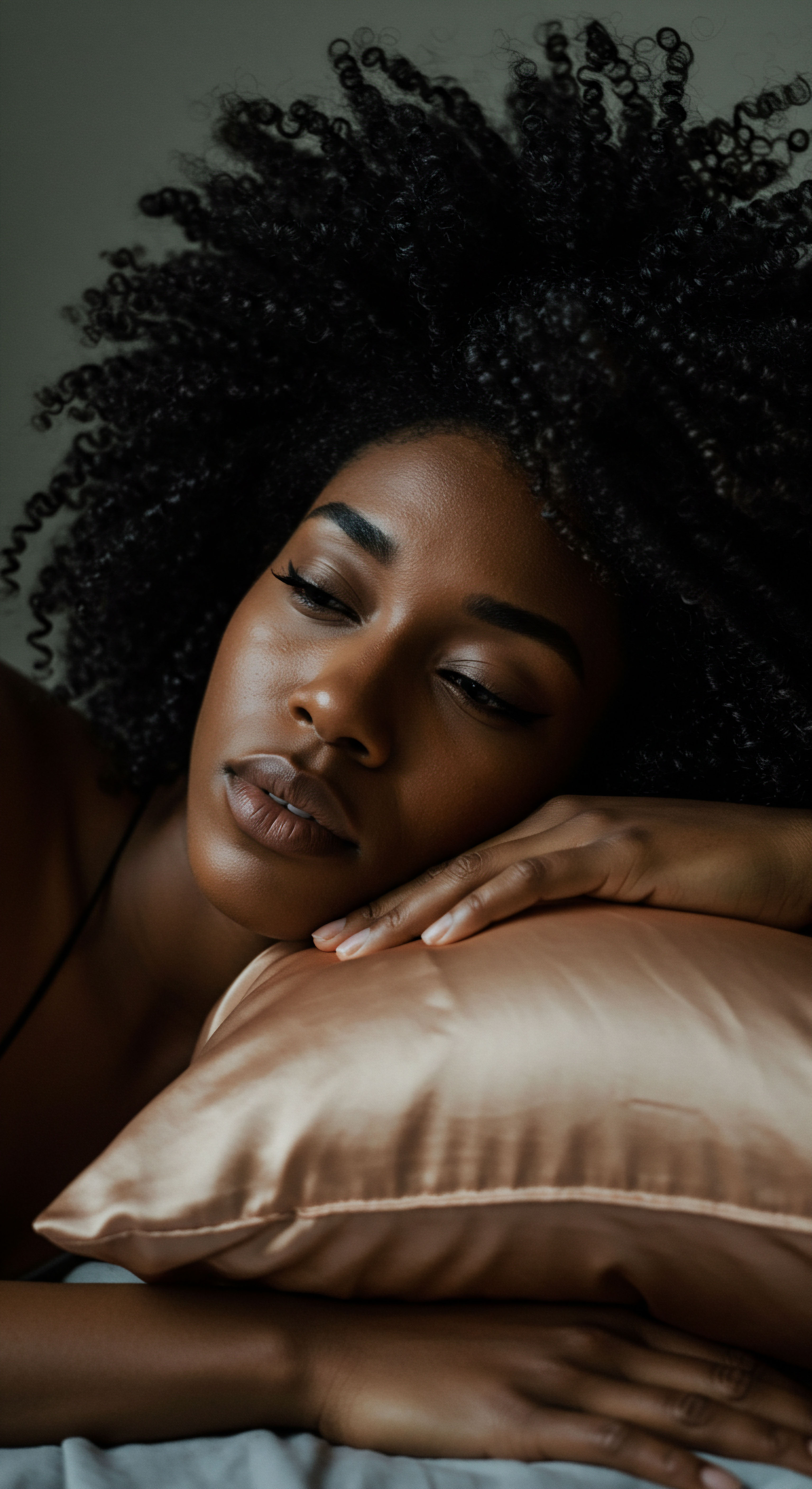
Hair as an Ancient Language of Identity
In ancient societies, the way one’s hair was styled often spoke volumes, acting as a visual lexicon understood by all within the community. It could signify a person’s age, marital status, social standing, or even their role in rituals. This visual coding fostered immediate recognition and understanding, streamlining social interactions and reinforcing collective norms. The shared understanding of these hair ‘dialects’ meant that a glance could convey what pages of text might struggle to express today.
- Age Markers ❉ Many ancient cultures styled children’s hair differently from adolescents or adults, signifying a progression through life stages and the responsibilities that came with each.
- Marital Status ❉ Particular braids or coverings might instantly signal whether an individual was unmarried, wed, or widowed, guiding social conduct and interactions.
- Social Standing ❉ The complexity of a hairstyle, the types of adornments, or even the length of hair could denote one’s position within a hierarchy, from royalty to commoner.
- Ritual Roles ❉ Specific hair preparations were often reserved for priests, healers, or those undergoing rites of passage, marking them as participants in sacred communal events.
These visible cues provided a constant, tangible reminder of one’s place within the collective, fostering a sense of shared identity and purpose. The very act of maintaining these styles, which often required assistance, further solidified the bonds between individuals.
Ancient hair practices transcended mere adornment, serving as a silent yet potent language that communicated identity, status, and communal belonging.
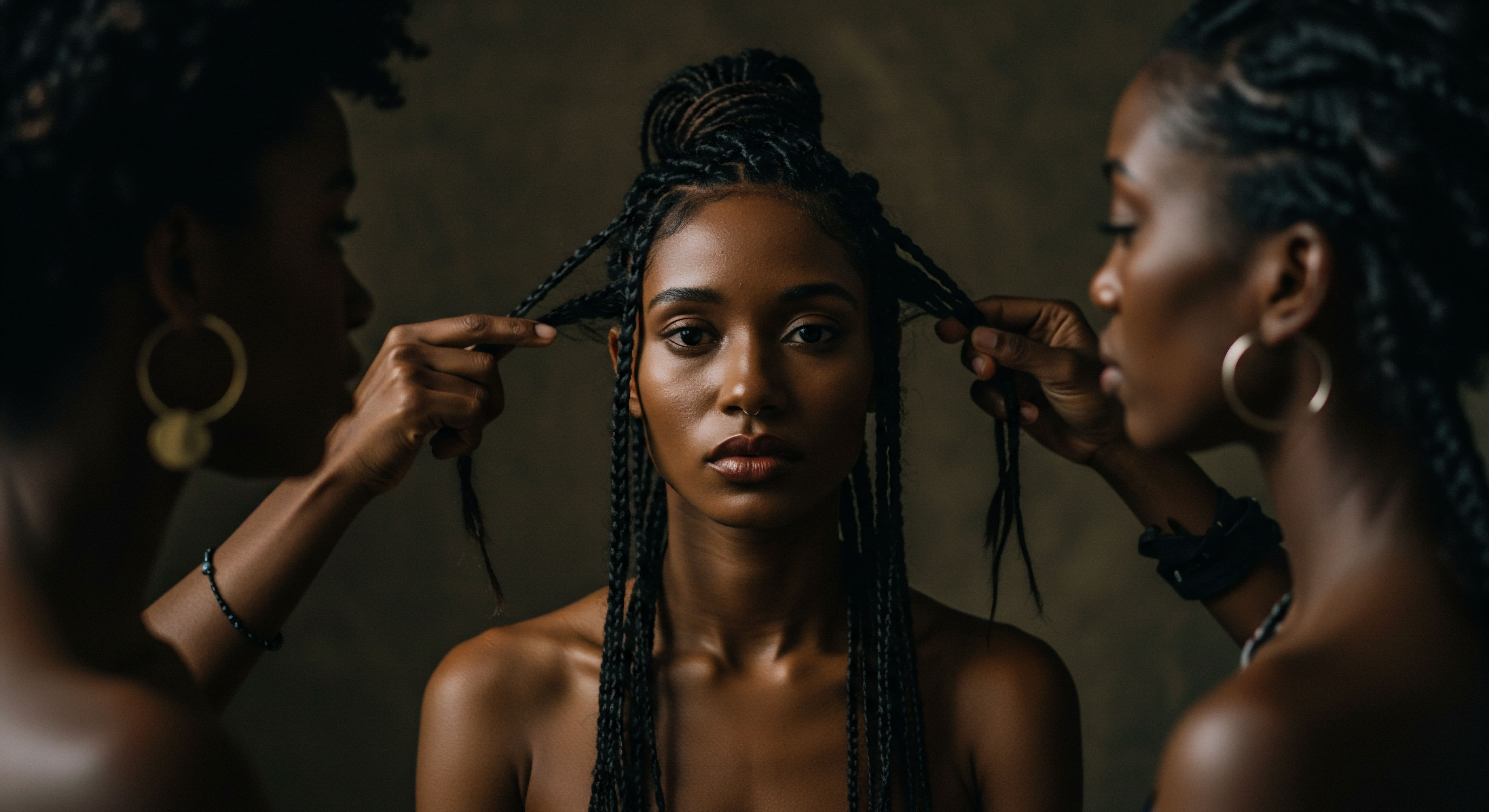
Early Communal Grooming and Shared Space
The act of grooming, especially hair grooming, was intrinsically communal. Before the advent of personal mirrors or readily available individual tools, people relied on one another. Imagine a gathering where fingers deftly separated strands, applied natural emollients, or meticulously arranged braids.
This was not simply about tidying; it was a profound sharing of space, time, and trust. The intimacy of such moments facilitated storytelling, the transmission of ancestral knowledge, and the quiet comfort of companionship.
This shared physical space for grooming naturally led to a shared emotional space. Concerns were voiced, joys celebrated, and wisdom passed down through generations, all against the backdrop of a shared activity that required patience and gentle hands. These moments, seemingly mundane, formed the bedrock of social cohesion, transforming individual care into a collective ritual of connection. The tangible benefits of neat, healthy hair were matched by the intangible benefits of stronger interpersonal connections.
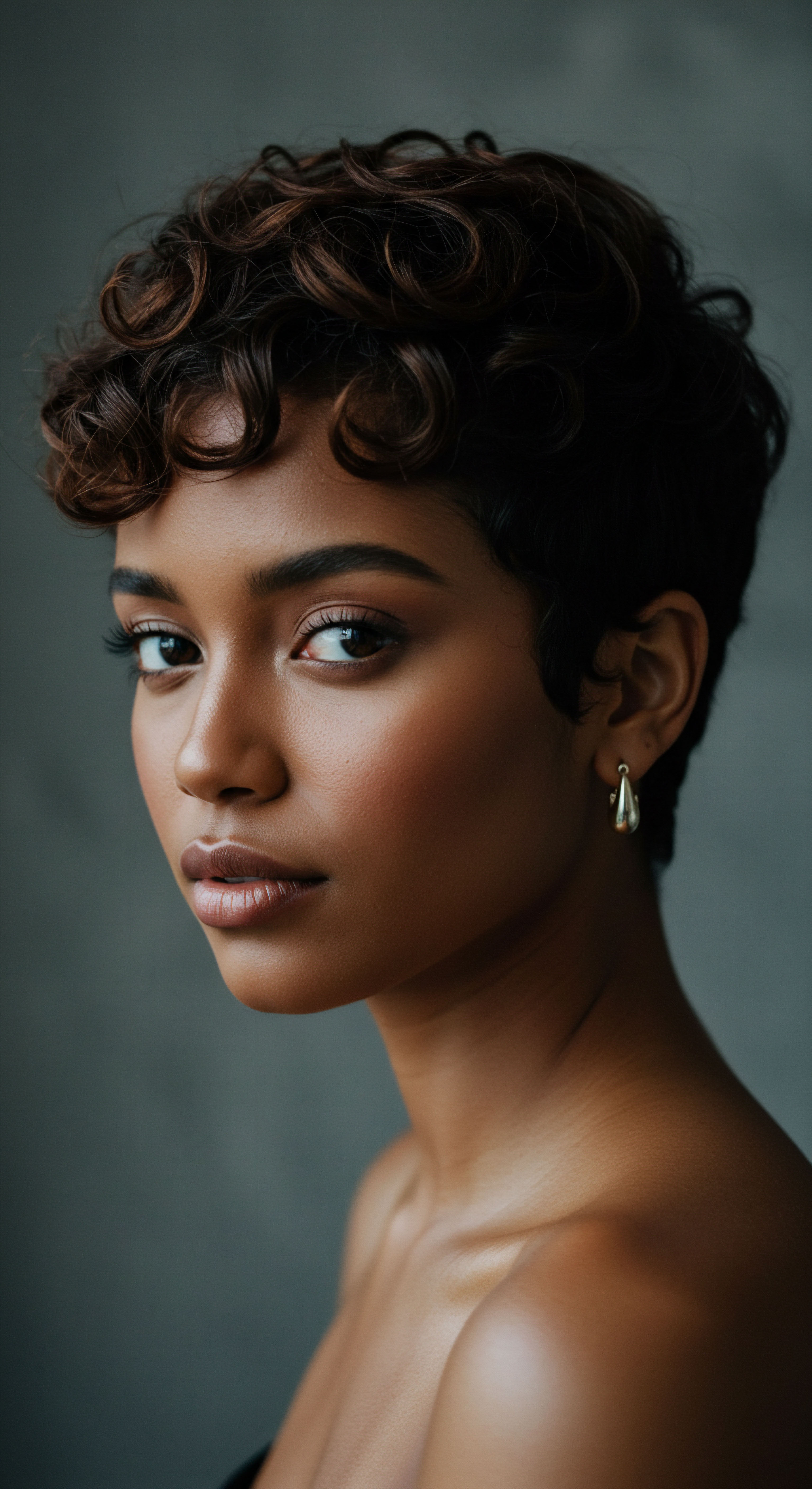
Ritual
We often seek ways to ground ourselves in the present, to find meaning in our daily routines. For ancient communities, hair care was rarely a mere routine; it was frequently elevated to the status of ritual, imbued with deeper meaning and communal significance. Moving beyond the foundational aspects of identity, this section considers how the deliberate, repeated acts of hair styling and care became powerful vehicles for social cohesion, spiritual connection, and the transmission of collective memory. These were not simply actions performed on hair; they were performances of community, meticulously carried out to honor tradition and reinforce shared values.
The deliberate nature of these practices, often tied to specific seasons, life events, or spiritual observances, transformed them from simple tasks into ceremonies. Whether it was the preparation of hair for a wedding, a coming-of-age ceremony, or a period of mourning, the communal involvement in these hair rituals reinforced shared beliefs and collective responsibilities. The very repetition of these acts, generation after generation, instilled a profound sense of continuity and belonging.

Hair and Rites of Passage
Throughout history, hair has been a central element in rites of passage, marking significant transitions in an individual’s life and their standing within the community. These rituals, often communal affairs, solidified the person’s new identity and their changed relationship with the group.

The Significance of Hair Alteration
The cutting, shaving, or elaborate styling of hair often symbolized a shedding of the old self and the adoption of a new one. For instance, in some ancient societies, a child’s first haircut was a communal event, signifying their entry into a more formal stage of childhood and their recognition by the elders. Similarly, young women might have their hair styled in complex ways to mark their eligibility for marriage, a transformation that involved the entire community’s recognition and blessing.
Consider the Ndebele people of Southern Africa, where elaborate hairstyles and head coverings traditionally mark a woman’s marital status and position within her family and community. A young woman’s transition from girlhood to womanhood, and later to marriage, was often accompanied by specific hair rituals performed by older women. These practices were not just about appearance; they were about the transmission of cultural knowledge, the affirmation of social roles, and the strengthening of intergenerational bonds through shared activity and symbolic transformation.
Hair rituals, particularly those tied to life’s transitions, served as powerful communal affirmations of identity and belonging.
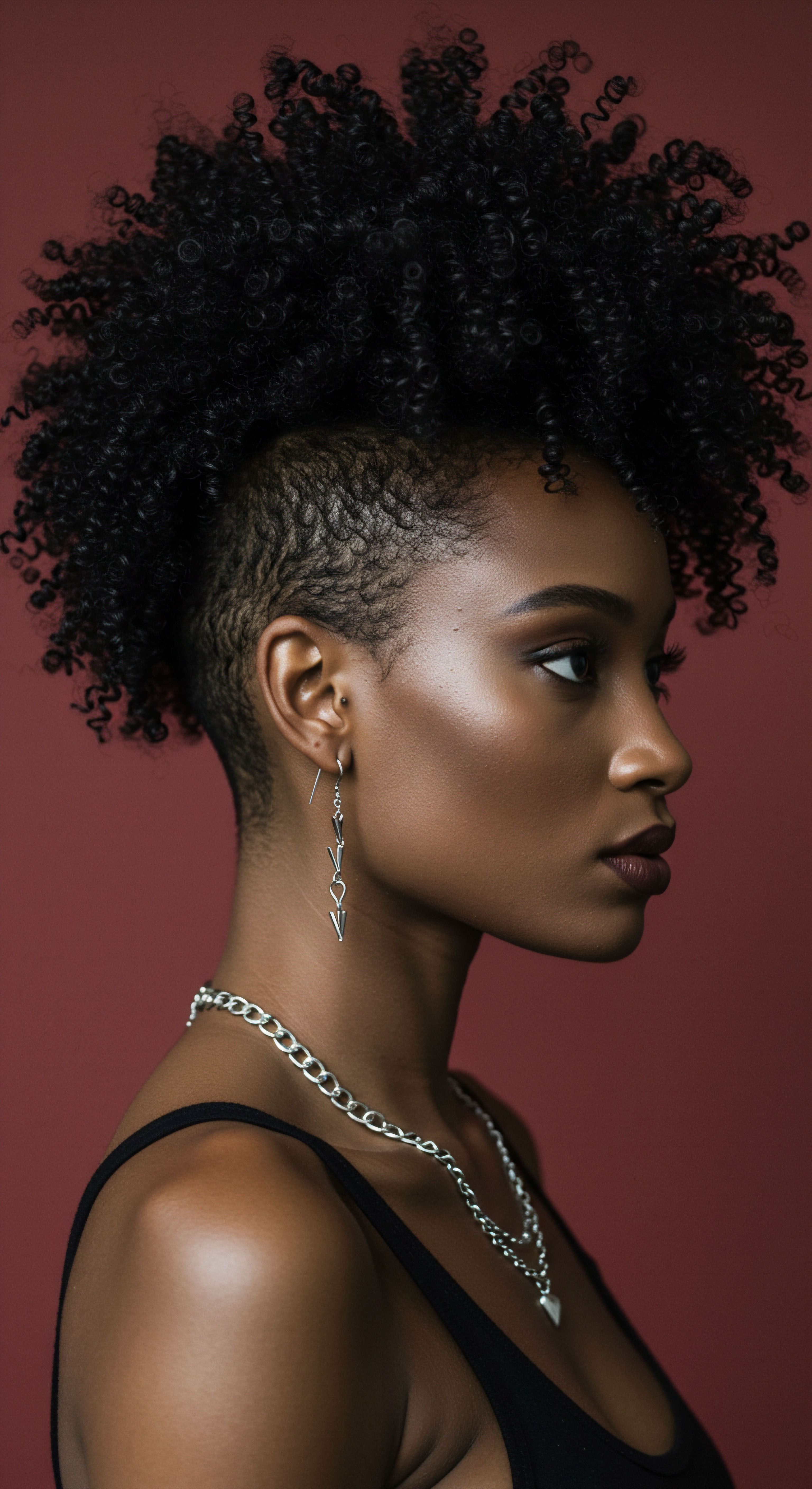
Communal Hair Preparations for Sacred Occasions
Beyond individual rites, entire communities would engage in specific hair preparations for festivals, religious ceremonies, or important gatherings. These preparations were often communal endeavors, involving shared resources, labor, and expertise. The collective effort itself deepened communal ties, as individuals worked together towards a shared aesthetic and spiritual goal.
In ancient Egypt, for example, the preparation of elaborate wigs for both the living and the deceased was a meticulous and often communal process. While specific individuals might have been skilled wigmakers, the overall culture placed immense value on these hairpieces as symbols of status, divinity, and purity. The care involved in their creation and maintenance, often requiring specialized knowledge and materials, underscored their importance within the societal and spiritual framework. This shared understanding of hair’s symbolic weight contributed to a collective cultural identity.
The use of specific oils, clays, or plant extracts in hair care rituals often had both practical and symbolic significance. These natural elements were gathered, prepared, and applied communally, sometimes accompanied by songs, chants, or prayers. This collective engagement with the natural world through hair care deepened a community’s connection to its environment and its spiritual beliefs. The shared sensory experience of these rituals—the scents, the textures, the sounds—created a powerful, multisensory bond among participants.

Relay
How did the wisdom of hair care, the silent language of braids, and the meaning of shared rituals, move through time and across generations? This final section ventures into the most intricate layers of how ancient hair practices cemented communal bonds, exploring the profound ways knowledge was transmitted, social structures reinforced, and even historical narratives preserved through the seemingly simple act of tending to one’s hair. It considers the often-unseen currents of connection that flowed beneath the surface of daily life, currents that were profoundly shaped by the very strands on our heads. We consider the interwoven biological, psychological, and social factors that elevated hair practices beyond personal hygiene to become cornerstones of collective identity.
The very act of passing down hair care techniques from elder to youth, often through direct physical instruction, constituted a powerful pedagogical mechanism. This was not merely about teaching a skill; it was about transmitting cultural values, historical narratives, and an understanding of one’s place within the lineage. The intimate, hands-on nature of this instruction ensured that the knowledge was deeply embedded, creating a living archive within the community.
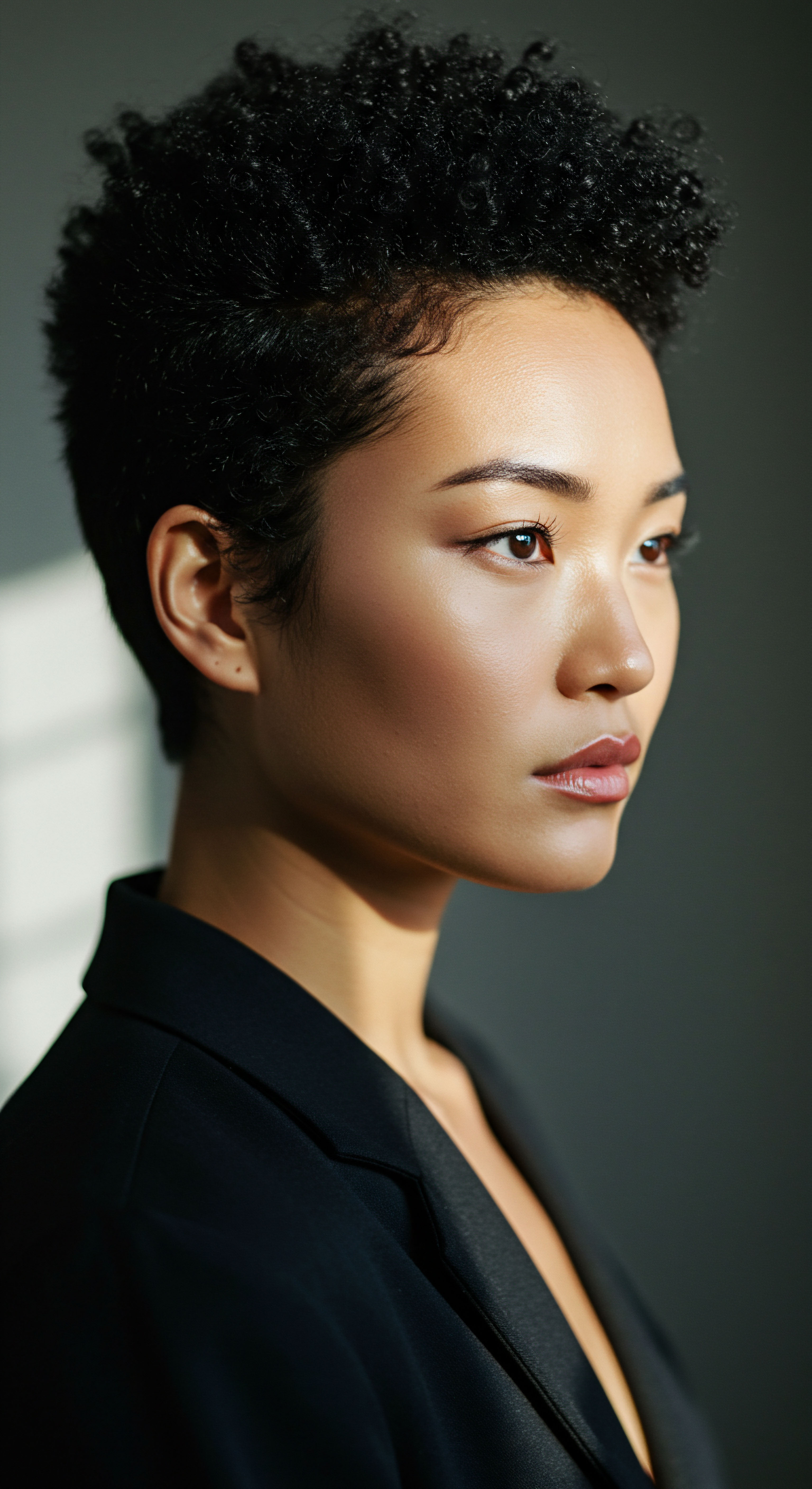
Hair as a Repository of Collective Memory
Beyond practical application, hair itself could serve as a tangible record of a community’s past. Specific styles, patterns, or adornments might commemorate historical events, migrations, or significant achievements. When these styles were replicated, they became living memorials, ensuring that collective memory was not merely recounted but actively re-enacted.

Can Hair Styles Narrate History?
Consider the intricate braiding patterns seen in various African traditions, where certain designs were not simply decorative but encoded information. These patterns could tell stories of a community’s origin, its triumphs, or its social hierarchies. The very act of creating these complex styles required immense skill and patience, often taking hours or even days, making the process itself a communal event. This communal effort, combined with the visual storytelling of the hair, solidified shared historical understanding.
A compelling instance of hair’s profound communal significance, especially within the context of resilience and covert communication, can be observed in the practices of enslaved Africans. During the transatlantic slave trade and subsequent periods of enslavement, hair became a powerful, albeit subtle, tool for survival and solidarity. While seemingly mundane, the methods of hair styling, often performed in communal settings, served as a clandestine means of preserving cultural identity and even transmitting vital information. For example, it is documented that some enslaved women would braid rice grains or seeds into their intricate cornrow patterns before escaping plantations.
This allowed them to carry sustenance for their perilous journey, transforming their hair into a living map and a vessel of hope. This practice, while born of oppression, underscores how deeply hair was integrated into survival strategies and communal support networks, a silent language of resistance and collective determination. This practice, though rooted in hardship, powerfully demonstrates how hair became a tangible link to ancestral knowledge and a silent facilitator of collective action, strengthening bonds in the face of unimaginable adversity.

The Social Architecture of Hair Care
The communal nature of ancient hair practices inherently reinforced social structures and hierarchies. The division of labor in hair care, the roles of elders, and the transmission of specialized skills all contributed to the overall social architecture of a group.
In many ancient societies, the elderly, particularly women, often held the revered position of primary hair stylists and knowledge keepers. Their hands, weathered by experience, were the ones that guided the younger generations through the intricacies of braiding, twisting, and adornment. This role granted them immense respect and influence, reinforcing their authority within the community. The act of a younger person submitting their head to an elder for styling was a physical manifestation of respect and a recognition of the elder’s wisdom, thereby solidifying intergenerational bonds and the societal structure.
| Aspect of Hair Practice Shared grooming spaces |
| Communal Bond Reinforced Interpersonal connection, trust, verbal exchange |
| Aspect of Hair Practice Hair as identity marker |
| Communal Bond Reinforced Group recognition, shared cultural norms |
| Aspect of Hair Practice Rites of passage styling |
| Communal Bond Reinforced Life stage transitions, collective affirmation |
| Aspect of Hair Practice Knowledge transmission (elder to youth) |
| Communal Bond Reinforced Intergenerational respect, cultural continuity |
| Aspect of Hair Practice These elements highlight the profound social depth of ancient hair practices. |

How Did Shared Hair Rituals Influence Collective Psychology?
The collective engagement in hair rituals also had a profound impact on the psychological well-being of individuals within the community. The sense of belonging, validation, and shared purpose derived from these practices contributed to a stronger collective identity and reduced feelings of isolation.
The synchronized movements, the shared laughter, the comforting silence—all contributed to a collective emotional experience. When an entire community participated in a ritual haircut for mourning, for instance, the shared act of physical transformation mirrored and supported the collective emotional processing of grief. This communal expression of sorrow, marked by a visible change in appearance, provided a powerful, tangible demonstration of empathy and solidarity.
Similarly, celebratory hair adornments, often involving bright colors, shells, or beads, created a visual symphony of joy. The shared effort in preparing these festive styles, and the collective admiration for the finished looks, heightened the sense of communal celebration and shared happiness. These practices created a shared aesthetic and a collective pride in appearance, fostering a sense of unity and shared identity.
Hair practices, from practical grooming to symbolic rituals, acted as a vital social adhesive, strengthening community bonds through shared experience and knowledge transmission.
| Ritual Aspect Collective preparation |
| Psychological Benefit Reduced isolation, increased sense of belonging |
| Ritual Aspect Symbolic transformation |
| Psychological Benefit Coping mechanisms for life changes, collective processing |
| Ritual Aspect Shared aesthetic |
| Psychological Benefit Collective pride, enhanced group cohesion |
| Ritual Aspect These rituals provided emotional and psychological support within communal settings. |
The intimate, sustained interaction required for many ancient hair practices provided a consistent setting for the transmission of oral traditions, myths, and moral lessons. As hands worked on hair, voices shared stories. These moments became informal classrooms, where the younger generation absorbed the collective wisdom of their ancestors, reinforcing the cultural foundations of their community. This living transmission of knowledge, passed down through the physical act of hair care, created a continuity that transcended individual lifetimes, solidifying the bonds between past, present, and future generations.

Reflection
As we consider the ancient ways, a gentle realization surfaces ❉ hair, in its myriad forms and textures, was never merely an appendage. It was a vibrant, living testament to connection, a silent witness to the ebb and flow of human relationships. From the shared intimacy of a mother braiding her child’s hair to the grand communal preparations for a sacred event, these practices sculpted not just individual appearances, but the very heart of collective existence. The echoes of these ancient bonds, forged through touch, shared stories, and visual language, still resonate today, inviting us to rediscover the profound, often overlooked, ways our strands continue to tell stories of who we are, and who we are together.
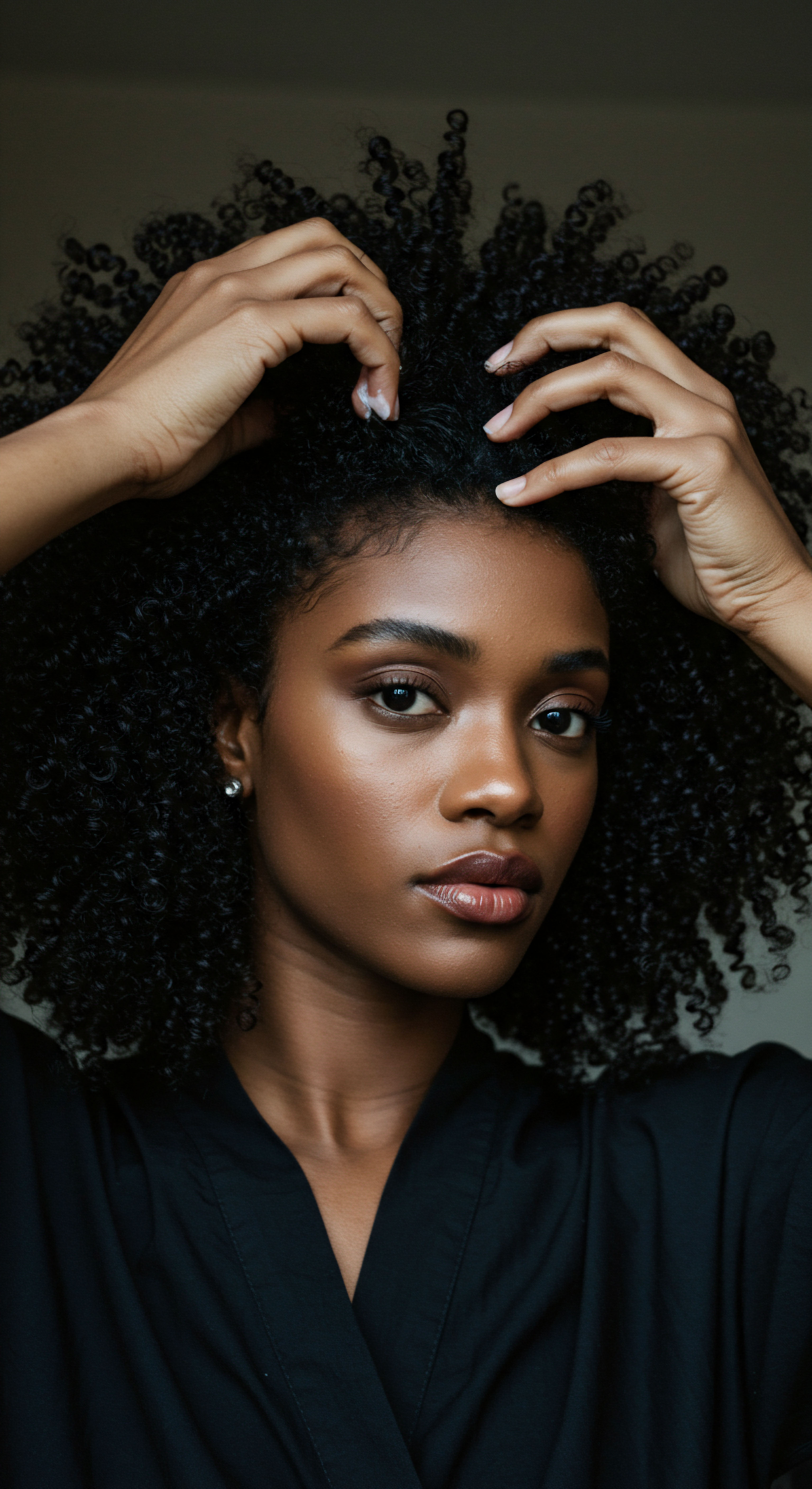
References
- Sieber, Roy, and Herreman, Frank. Hair in African Art and Culture. Museum for African Art, 2000.
- Byrd, Ayana, and Tharps, Lori L. Hair Story ❉ Untangling the Roots of Black Hair in America. St. Martin’s Press, 2014.
- Mercer, Kobena. Welcome to the Jungle ❉ New Positions in Black Cultural Studies. Routledge, 1994.
- Pitts, Carolyn. African American Hair ❉ An Exploration of Culture and Identity. University Press of Mississippi, 2017.
- Banks, Ingrid. Hair Matters ❉ Beauty, Power, and the Politics of Hair. New York University Press, 2000.
- White, Shane, and White, Graham. Stylin’ ❉ African American Expressive Culture From Its Beginnings to the Zoot Suit. Cornell University Press, 1999.
- Akbar, Na’im. Chains and Images of Psychological Slavery. New Mind Productions, 1996.
- Gilroy, Paul. The Black Atlantic ❉ Modernity and Double Consciousness. Harvard University Press, 1993.